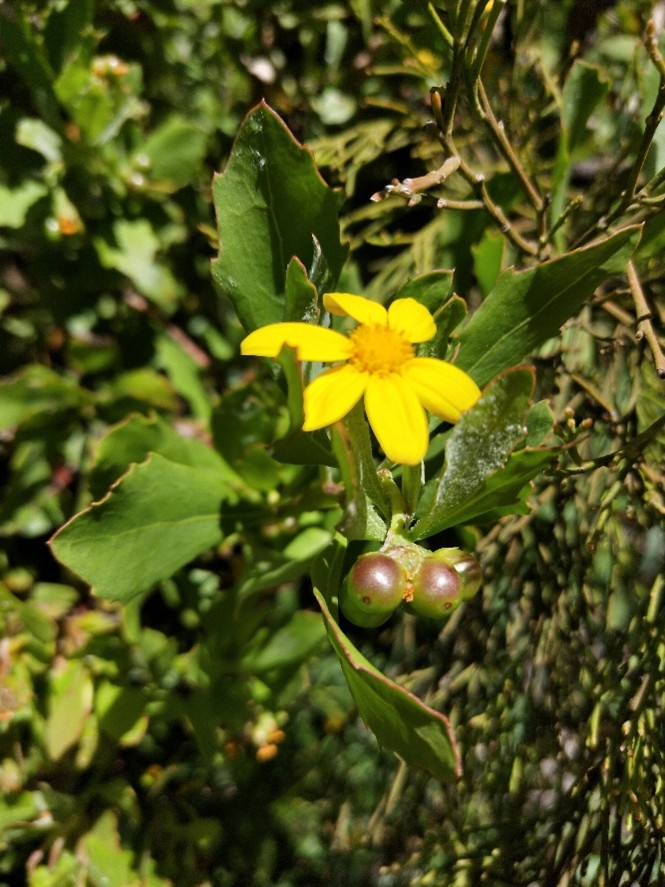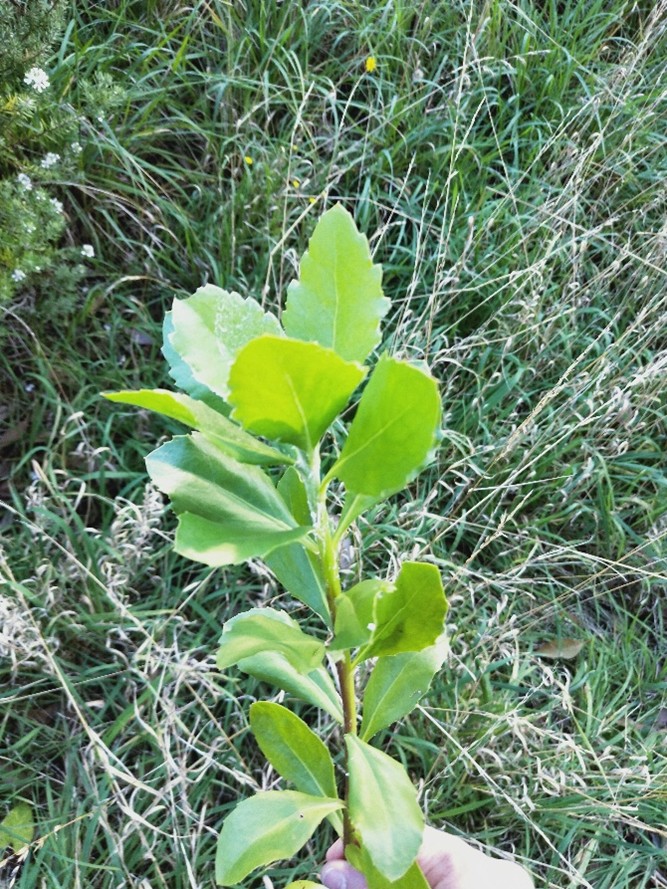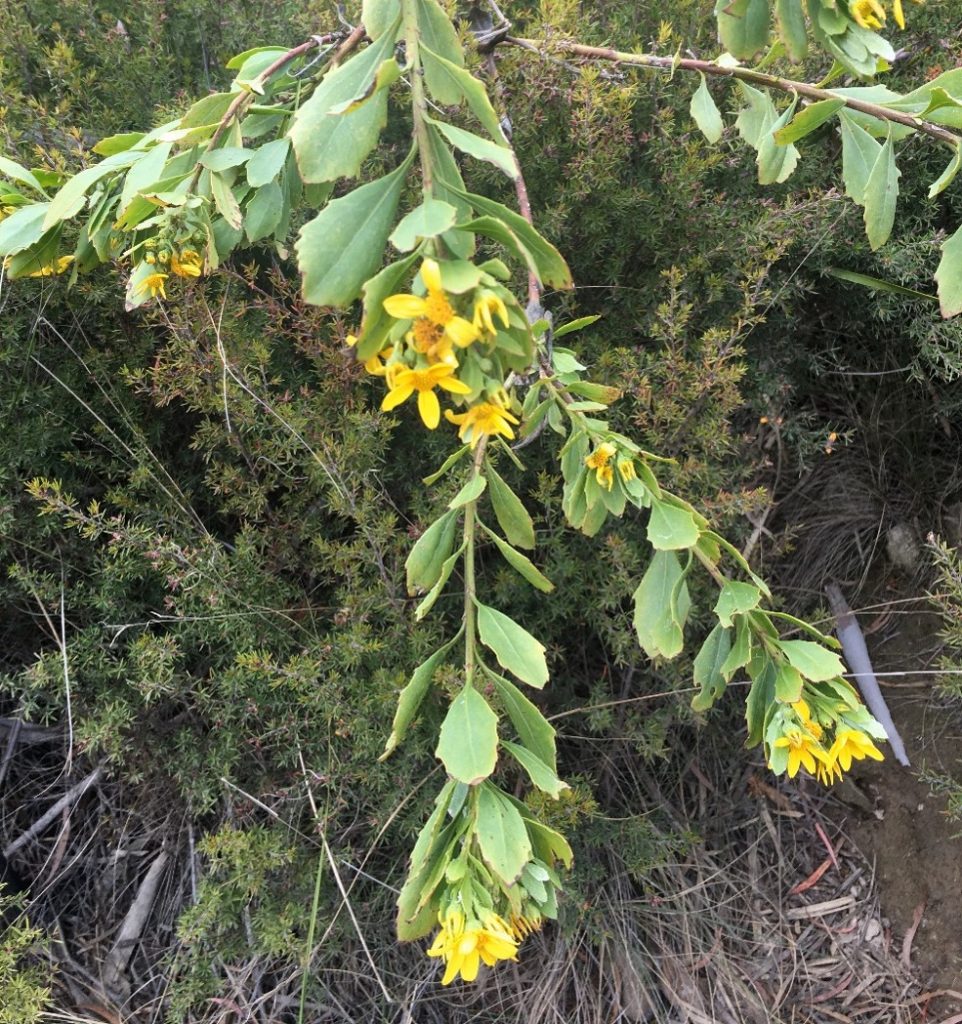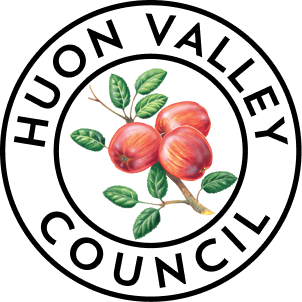
Boneseed is a declared weed under the Tasmanian Biosecurity Act 2019 and is listed as a Priority 3 weed in the Huon Valley. In our region, management efforts are focused on containing the main infestation between Cygnet and Huonville, while aiming to eradicate any smaller, outlying populations.
Why is boneseed a problem?
Boneseed is recognised nationally as a Weed of National Significance (WoNS) due to its ability to spread rapidly and transform natural landscapes. It poses several serious environmental risks:
- Displaces native species – Boneseed forms dense thickets that outcompete native vegetation, reducing biodiversity and excluding understorey plants.
- Increases fire risk – Dense stands contribute to higher fuel loads.
- Produces long-lasting seed banks – A single plant can produce up to 50,000 seeds per year, with seed remaining viable in the soil for over a decade.
How to identify boneseed
Boneseed is relatively easy to identify if you know what to look for:
- Leaves: Oval, leathery and toothed. Young leaves may appear softer, sometimes with a white cottony covering.
- Flowers: Bright yellow, daisy-like blooms in clusters at the tips of branches.
- Flowering period: Mid-spring to early summer.


What You Can Do
If you spot boneseed outside the known ‘core area’, please report it to Council by emailing nrm@huonvalley.tas.gov.au. Early detection is critical to stopping its spread.
For advice on how to safely manage and control boneseed, visit the Department of Natural Resources and Environment Tasmania website or see our Weeds and the Huon Valley webpage for local information.

